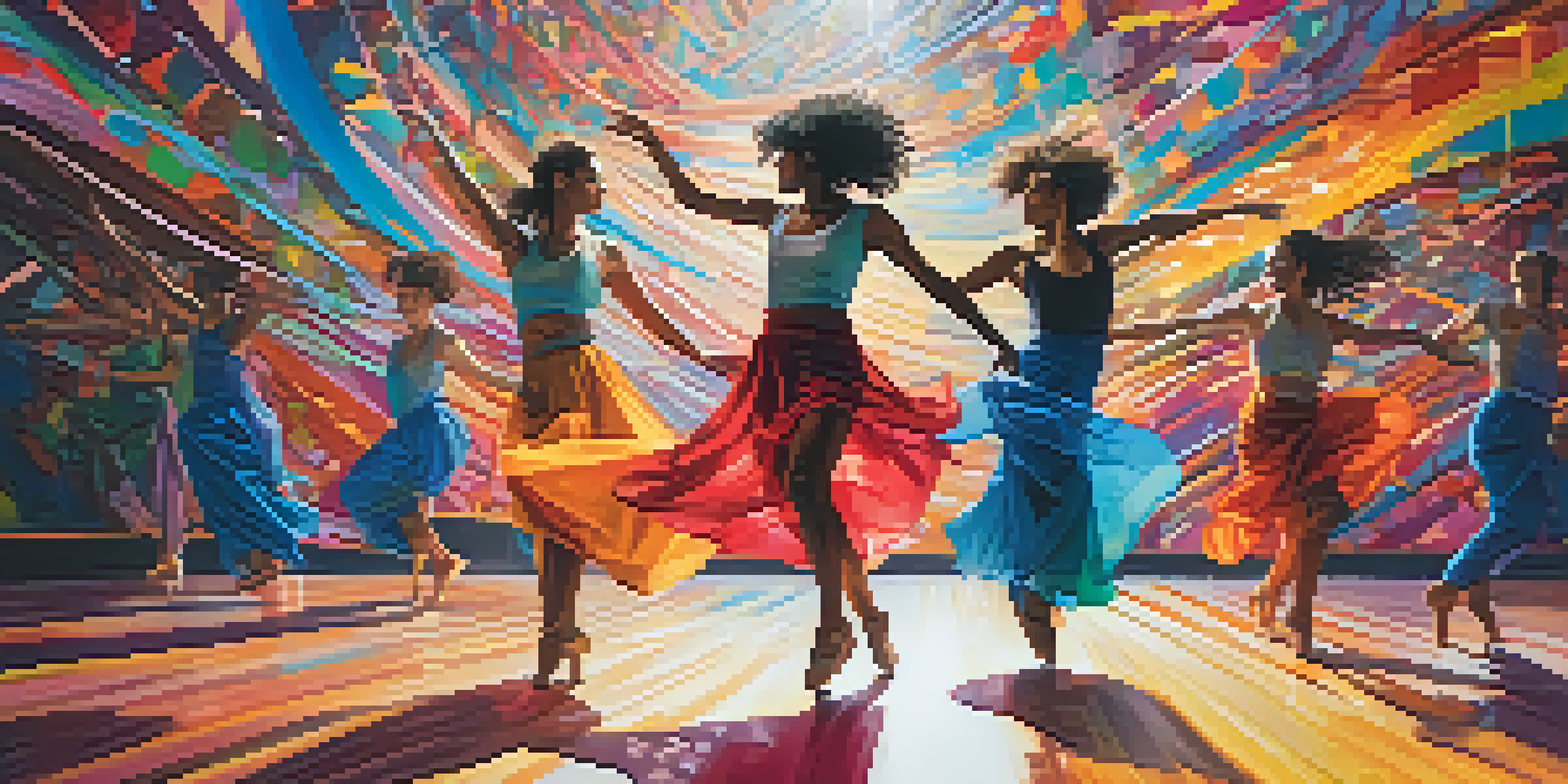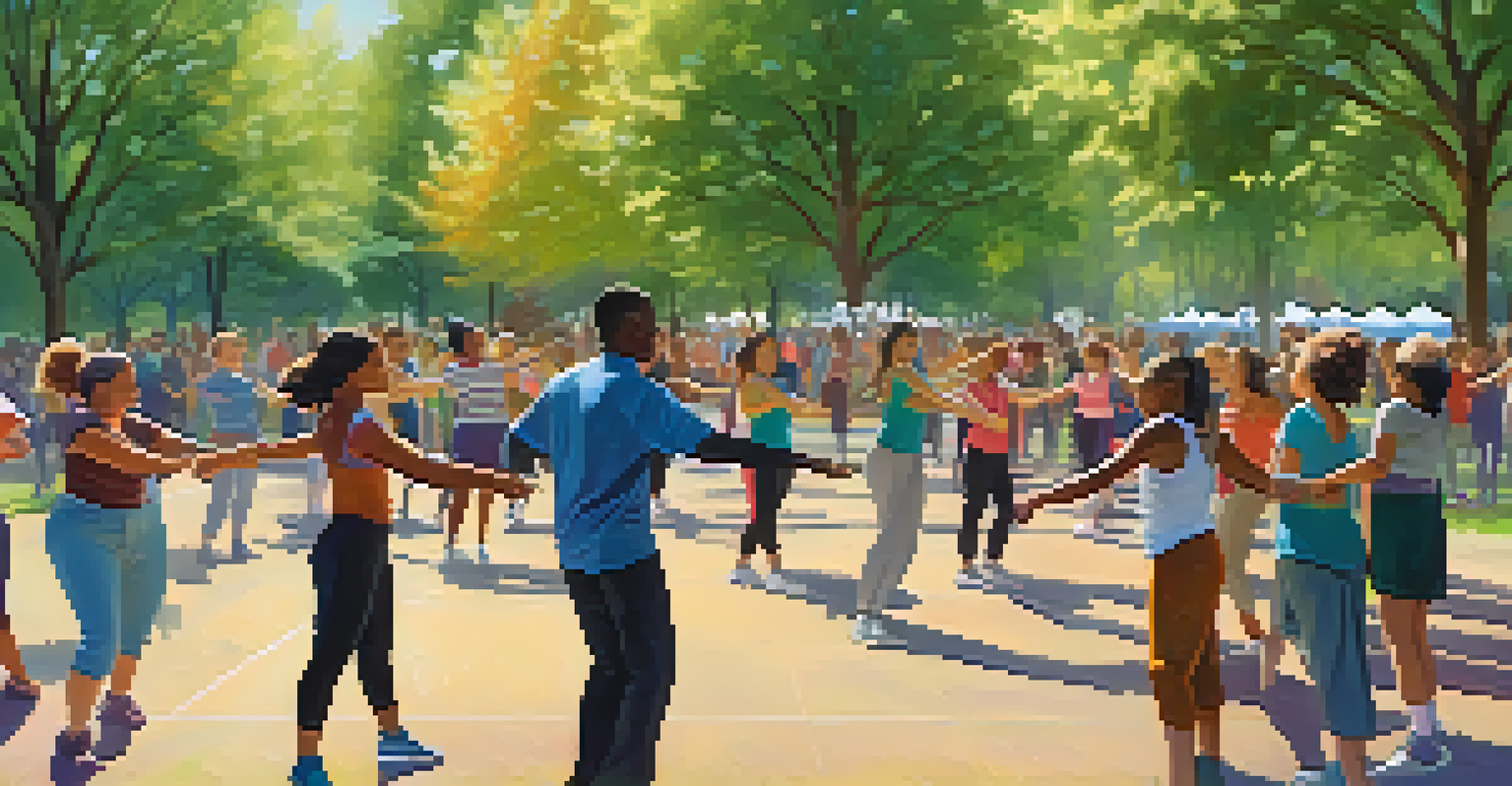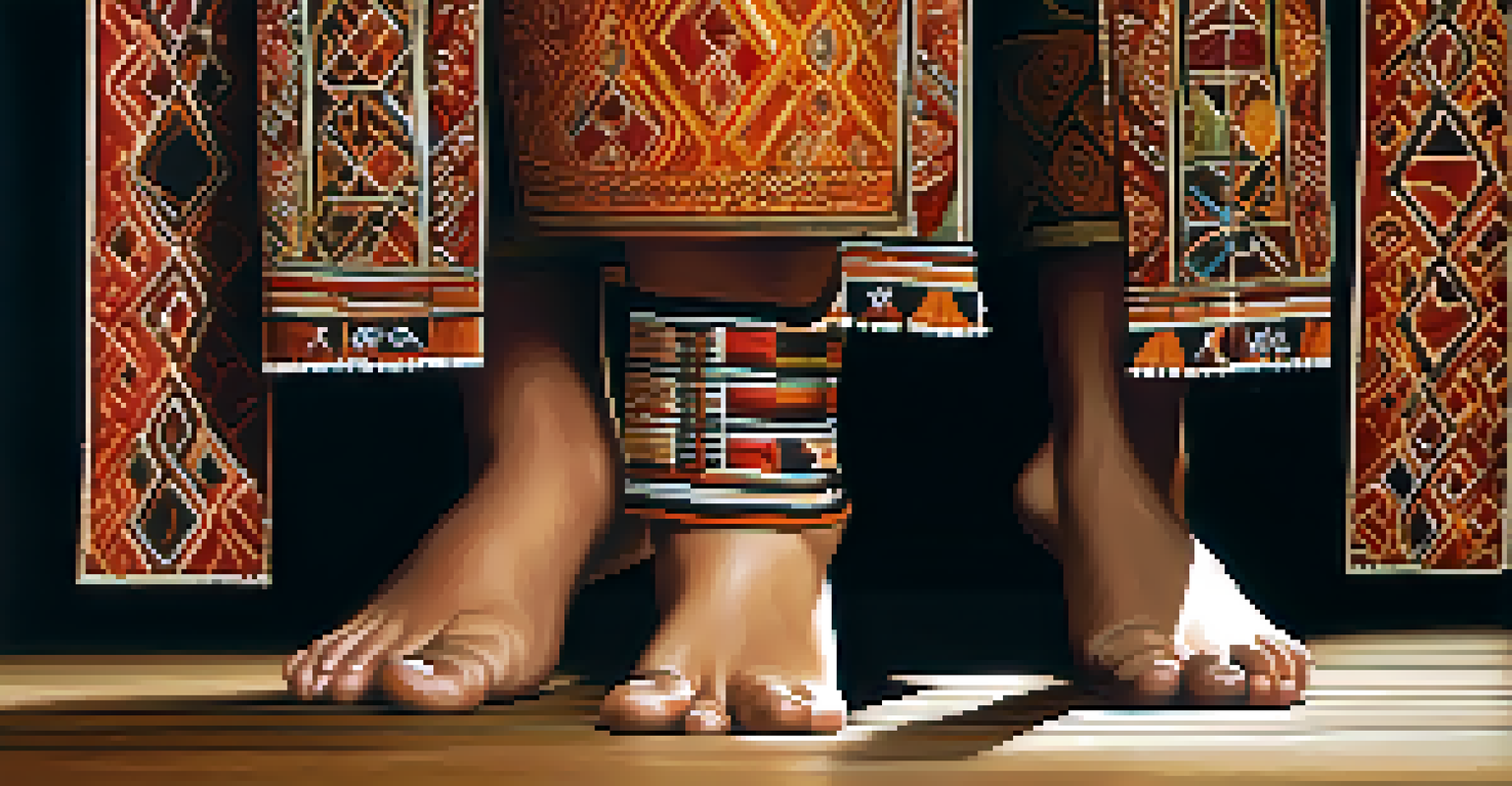The Evolution of Dance and Its Effect on Gender Perceptions

Understanding Dance as a Cultural Expression
Dance has always been a vital part of human culture, serving as a form of expression and communication. From ancient rituals to modern performances, it reflects societal values and norms. In many cultures, dance is intertwined with storytelling, conveying emotions and social messages that resonate with audiences.
Dance is the hidden language of the soul.
Different styles of dance can represent various aspects of culture, including gender roles. For example, traditional dances often highlight specific masculine or feminine qualities, shaping how societies view gender. This cultural lens makes dance a powerful tool for understanding historical and contemporary perceptions of gender.
As dance evolves, it not only mirrors changes in society but also influences them. The way we interpret and participate in dance can challenge existing gender norms, making it an essential part of the conversation around gender identity and expression.
Historical Perspectives: Dance and Gender Roles
Historically, dance has often been categorized by gender, with distinct roles for men and women. In many societies, men were seen as the dominant performers, showcasing strength and skill, while women were often relegated to more delicate and graceful movements. This division reinforced traditional gender roles and expectations within those cultures.

Classic ballets, for instance, emphasized femininity through ethereal movements, while male dancers showcased power and athleticism. These portrayals not only influenced how dancers were perceived but also how audiences viewed gender capabilities. The rigid roles created through dance often mirrored societal beliefs about what it meant to be male or female.
Dance Reflects Cultural Values
Dance serves as a powerful form of expression that mirrors societal values and norms, particularly in relation to gender.
However, as awareness of gender fluidity and equality grew, so did the evolution of dance. Contemporary dance forms began to blur these lines, challenging the notion that certain movements belong to one gender or another, paving the way for more inclusive interpretations.
The Impact of Social Movements on Dance
The rise of social movements advocating for gender equality has had a profound impact on dance. The feminist movement, for instance, not only fought for women's rights but also sought to redefine how women were portrayed in the arts, including dance. This shift encouraged female choreographers and dancers to explore themes of empowerment and self-expression.
The body says what words cannot.
As a result, new forms of dance emerged that celebrated individuality and challenged traditional gender roles. Dance companies began to feature a more diverse range of voices, allowing for expressions that were previously marginalized. This evolution reflects broader societal changes and highlights the power of art in influencing perceptions.
Moreover, social media platforms have amplified these movements, allowing dancers to share their stories and challenge stereotypes. Dance challenges the status quo, making it a dynamic medium for advocating social change and reshaping gender perceptions.
Contemporary Dance: A Reflection of Modern Gender Identity
Contemporary dance has emerged as a vibrant space for exploring gender identity, often breaking away from traditional norms. Dancers are now experimenting with movements that reflect their personal experiences, leading to a richer and more diverse expression of gender. This genre allows for fluidity, where one can embody various identities rather than conforming to a singular role.
Choreographers are increasingly incorporating themes of gender fluidity and non-binary identities in their works, challenging audiences to rethink preconceived notions. This shift is not only artistic but also deeply political, as it encourages discussions about identity and representation in society.
Social Movements Shape Dance
The rise of social movements advocating for gender equality has transformed dance, encouraging diverse voices and empowering individuals.
By embracing contemporary dance, artists are redefining what it means to perform and express gender. This evolution invites audiences to engage with and reflect on their own perceptions, fostering a more inclusive understanding of gender in the arts.
Dance as a Means of Empowerment
For many, dance serves as a powerful means of empowerment, allowing individuals to reclaim their identities. Through movement, people can express emotions that words often fail to capture, creating a sense of freedom and authenticity. This empowerment is especially significant for those who have felt marginalized or confined by traditional gender roles.
Dance workshops and community programs have sprung up, focusing on inclusivity and self-expression. These spaces foster a sense of belonging, encouraging participants to explore their identities without judgment. As individuals engage in dance, they often find strength in their unique perspectives, challenging societal norms.
This empowerment extends beyond the dance floor, as individuals carry the confidence gained through dance into their daily lives. By embracing their identities through movement, they contribute to a broader cultural shift that values diversity and inclusion.
Global Influences: Dance Across Cultures
Dance is a global language that transcends cultural boundaries, offering insights into how different societies perceive gender. In many cultures, traditional dances celebrate gender roles that may differ significantly from Western perspectives. For instance, in some African cultures, certain dance forms empower women, highlighting their strength and resilience.
As globalization continues to influence the arts, cross-cultural exchanges have led to the fusion of dance styles. This blending not only enriches the art form but also challenges the rigidity of gender roles across cultures. Dancers can draw from a pool of diverse influences, creating performances that reflect a more nuanced understanding of gender.
Contemporary Dance Redefines Identity
Contemporary dance explores and embraces fluid gender identities, challenging traditional norms and fostering a more inclusive understanding of gender.
By appreciating and engaging in global dance forms, we can cultivate a more inclusive perspective on gender. This exchange fosters conversations about how different cultures approach gender and encourages a broader dialogue about identity and expression.
The Future of Dance and Gender Perceptions
As we look to the future, the evolution of dance will likely continue to impact gender perceptions in profound ways. With the rise of technology and social media, emerging forms of dance are gaining visibility, allowing for new narratives around gender to emerge. Dancers are using these platforms to challenge stereotypes and advocate for change, shaping the way we view gender in the arts.
Furthermore, educational institutions are beginning to incorporate discussions around gender and dance into their curricula. By fostering awareness and understanding, they prepare the next generation of dancers to approach their craft with a mindset of inclusivity and respect for diverse identities.

Ultimately, the future of dance holds the potential for even greater exploration of gender identities. As artists push boundaries and challenge norms, they will continue to inspire audiences and reshape perceptions, highlighting the transformative power of dance in our society.